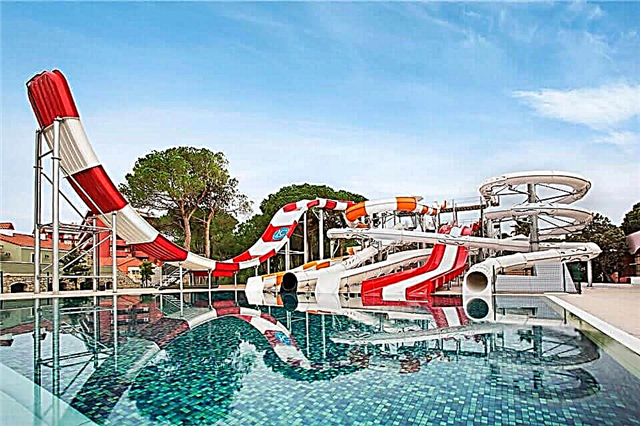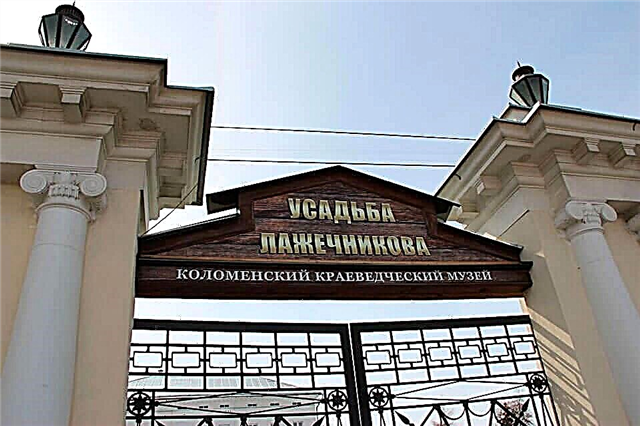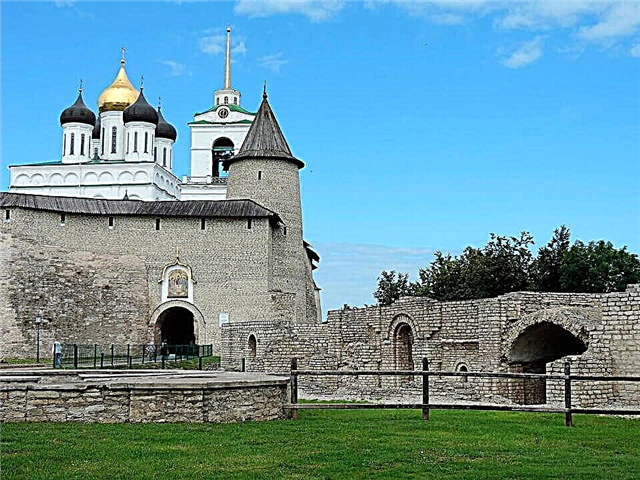The distinctive and ancient city of Pskov stretches along the northwestern borders of the Russian land. The official date of its foundation is considered to be 903. Over its centuries-old history, the Pskov region has more than once become a stronghold against Western conquerors. The grandiose defensive structures stopped the raids of the enemy troops of the Swedes, Germans, Lithuanians and Poles.
The historical, cultural and spiritual heritage of Pskov makes an indelible impression on tourists. Ancient fortress buildings, numerous Orthodox churches, monumental monuments form a single architectural ensemble, which is harmoniously inscribed in the picturesque nature of the region.
The abundance of ancient sights will allow tourists to easily determine what to see in Pskov in two days on their own. For a thorough acquaintance in the optimal time with the historical ancient Russian land, travelers are recommended to follow five routes:
- visit the Vlasyevskaya tower to comprehend all the beauty of the city from a bird's eye view
- see the unique frescoes of the 12th century in the Mirozhsky monastery
- dine in the white-stone chambers of the 17th century
- make a wish at the sword of Prince Dovmont
- count 10 churches in the city center
So, our exciting route begins.
First day
The first day of your stay in the glorious city should be devoted to visiting historical places of worship. The preserved ancient temples, civil and defense buildings form the unique look of the ancient city. Architectural objects are imbued with the atmosphere of past eras, which arouses genuine interest among tourists. Along with amazing buildings, the Pskov region is famous for its monumental monuments and various museums, which this primordially Russian land can deservedly be proud of.
Pskov Kremlin

This is one of the main symbols of the city, a majestic example of ancient Russian medieval defensive architecture. The fortification was laid in the 8th century to protect the western borders of Russia from invasions of foreign enemy troops.
The mighty impregnable fortress amazes with its powerful fortifications. It is surrounded by massive watchtowers, high white-stone walls with loopholes and numerous passages. The Kremlin is built on a rocky hill washed by the waters of two rivers - Pskov and Velikaya.
The oldest architectural masterpieces rise on three hectares of well-groomed territory. This is the monumental Trinity Cathedral with a bell tower, Prikaznye Chambers and other buildings. On the fortress wall hangs the sword of Prince Dovmontov, who ruled the city in the 13th century.
The blade of the outstanding military leader is a sacred relic for the people of Pskov. This weapon won more than one victory over the Livonian knights. Open to tourists every day from 8:00 to 22:00. Free admission.
Dovmont town

A small territory adjoins the southern wall of the Kremlin, where the administrative, political and spiritual center of the Pskov region was located in the Middle Ages. This is Dovmont's city, named after a prince of Lithuanian origin. Having left his homeland due to internal strife, the fearless commander adopted the Orthodox faith and devotedly served the Russian people for 33 years. Dovmont's city was a cluster of numerous chapels and various civil buildings, erected close to each other on one and a half hectares of land.
The dense development was due to the fact that the border Pskov was constantly threatened by the threat of an attack from neighboring enemies. To erect temple complexes and other significant structures outside the fortress meant knowingly dooming them to destruction.
During the Northern War, Emperor Peter I ordered to equip earthen bastions on the territory of the cult place for the installation of powerful firearms. Most of the structures were destroyed over time or buried underground. Today, visitors to Dovmont's town can see stone ruins and foundations of buildings.
Order chambers

On the territory of the Kremlin there is the only administrative building of the 17th century preserved in its original form - the Order Chambers. Behind the powerful walls of a two-story rectangular building, built of limestone slabs, the administrative apparatus of the city sat. The structure is topped with a hipped roof and is decorated with a stone porch with a high staircase. The premises of the chambers were divided into several departments, which performed their functions and tasks.
Here administrative and legal issues were resolved, financial calculations were carried out, and also investigations and courts were conducted. Nowadays there is a museum in the Prikaz Chambers. The expositions recreate the environment in which medieval Russian office work was carried out. The historic interiors feature tables with documents and books, as well as benches, wardrobes and chests. The museum is open from 11:00 to 18:00, except Mondays.
Vlasyevskaya tower

At the beginning of the 15th century, one of the main defensive structures of the Pskov Kremlin, the Vlasyevskaya Tower, was erected. The building got its name from the church of St. Blasius, which previously stood nearby. The tower was the only passage from the floating bridge to the city center to the shopping area. In the 17th century, a strong fire significantly damaged the engineering structure.
After the devastating element, the tower was not restored for many centuries and, as a result, was dismantled. In its place, the Pskov city planners made a gentle descent to the embankment of the Velikaya River. Currently, the Vlasyevskaya Tower is a newly built object, restored according to the surviving medieval drawings.
The four-tier structure, rectangular in plan, is crowned with a high wooden hipped roof. The total height of the tower is 37 meters. At its top, there is a closed observation deck, where tourists can climb for 100 rubles. A delightful panorama opens from the narrow window openings.
Great gate

The main entrance to the Pskov citadel is the Kremlin's Great Gate. Above them you can see the mosaic icon of the Holy Trinity. After passing through the gate, tourists find themselves in a long and narrow corridor. Indestructible walls rise from both sides, striking in their power. The cramped passage served as an ingenious defense of the fort. This is a kind of medieval defensive trap. Here the enemy was trapped in a close stone "sleeve" and was quickly destroyed from above by the aimed fire of the fortress garrison.
Trinity Cathedral

The pearl and main attraction of the architectural complex of the Pskov Kremlin is the Trinity Cathedral. The majestic church rises 78 meters above the walls of the fortress. The monumental Orthodox shrine makes a gracious impression.
The two-tiered snow-white structure is an elongated and elongated cube topped with a four-pitched roof and five bulbous heads. Large window openings are decorated with platbands. According to legend, the first wooden cathedral was founded in the 10th century at the behest of Princess Olga, the grandmother of the baptist Prince Vladimir.
The construction of the temple was completed before Russia officially adopted Christianity. The shrine was rebuilt several times and finally acquired its modern appearance in the 17th century. The austere façade of the cathedral is offset by a luxuriously decorated interior. The interior decoration amazes with its special beauty.
The attention is drawn to the seven-tiered gilded iconostasis, skillfully decorated with carved floral ornaments. Numerous old icons, colorful canvases, tall vaulted painted ceilings, exquisitely decorated sarcophagi with the relics of Pskov saints - all this leaves peace and divine joy in the soul of every Orthodox visitor to the temple.
Flat tower

At the very edge of the water, where the waters of the Velikaya and Pskova rivers merge with each other, there is an expressive Flat Tower of the Pskov Kremlin. The structure differs significantly from the more slender similar defensive structures of the fortress. The low and thick tower was erected in the XIV century and since then has retained its original appearance, thanks to numerous restoration work. The circumference of its walls reaches 16 meters. The flat tower provided the fortress garrison with the ability to control the waterways around the city.
Thunder tower

On the picturesque green right bank of the river, the Gremyachaya Tower has been erected, attracting tourists with its formidable majestic view. The ancient six-tiered structure was built in 1525 and served as an important strategic site to protect the city from enemies. Numerous loopholes have been made in the massive limestone walls of the tower.
The inner space of the building made it possible to place an entire garrison of the fortress. Cannons were located on the floors. The old Gremyachaya Tower is covered with mystical legends. One of the legends says that in the dungeon's underground rooms, in a sarcophagus, among barrels of gold, lies the prince's daughter.
With the help of witchcraft, the young beauty was doomed to eternal sleep. Her peace is guarded by impure forces. Only a good fellow who will read prayers over the head of the princess for 12 days can dispel the spell. Evil spirits bring unbearable horrors and gloomy spectacles to praying brave souls, after which young people who have lost their minds were expelled from the tower. So the girl lies to this day, surrounded by treasures, waiting for her savior.
Lenin Museum-Apartment

Among the countless ancient architectural symbols and significant historical sites, it is impossible to pass by the Lenin Museum-Apartment. Returning from Siberian exile, the leader of the world proletariat settled in the Pskov region. The territorial proximity of the city to St. Petersburg and to the European border contributed to the successful ties of the revolutionary with his like-minded people.
In 1900 V.I. Lenin rented a small apartment on the third floor of a tenement building. Vladimir Ilyich lived in Pskov for only a few months. During this time, he managed to realize many plans for organizing the revolutionary struggle. The Pskov Memorial Museum is dedicated to active political activity and the life of the leader.
The expositions represent the working and everyday environment, complemented by the personal belongings of V.I. Lenin. The rooms are furnished with antique furniture of that time - a desk, a bed, chairs, wardrobes and a sofa. Here you can see collections of photographs, books, documents, newspapers, manuscripts and other interesting items.
The exhibits keep the memory of the country's revolutionary history. The museum is open to the public every day from 11:00 to 17:30, except Sunday, Monday and the last month of Tuesday.
Monument to Princess Olga

During the celebration of the 1100th anniversary of the city, a monumental monument to the highly esteemed Princess Olga was solemnly opened. The sculptural composition symbolizes the beginning of the establishment of the Orthodox faith on Russian soil.
Olga became the first ruler from a princely family who dared to convert to Christianity. She paid attention to the development of the spiritual life of the people. On the initiative of the princess, the Pskov Kremlin was fortified and one of the main temples of the city, the Trinity Cathedral, was founded. The height of the bronze figure of the legendary founder of Pskov is 4.5 meters.
Princess Olga with a halo over her head stands next to her young grandson Vladimir. The future Baptist of Russia holds an icon with the face of the Savior in his hands. The cylindrical pedestal of the monument is decorated with bas-relief images of Russian saints who are considered the patrons of Pskov. The majestic monument is located in the city center next to the fortress and other attractions.
Pogankin chambers

On one of the central streets, you can see the famous tourist site - Pogankin Chambers, which are a monument of classical medieval Russian architecture. The snow-white complex of stone buildings was erected in the 17th century. The historical building consists of interconnected asymmetric multi-level buildings. This is a real fortress with powerful walls, narrow window openings, hipped roofs, a porch with a steep staircase and a complex system of internal corridors.
The owner of the unique building was the rich and powerful merchant of the Pskov region, Sergei Pogankin. The old house housed residential, warehouse, utility and industrial premises. Today the Pogankin chambers are filled with the richest collection of museum exhibits of various subjects. These are dishes, church utensils, household items, paintings, jewelry, old icons, clothes, masterpieces of blacksmithing and other expositions. The museum is open from 11:00 to 18:00 every day, except Mondays.
Blacksmith yard

The blacksmith yard is one of the city's visiting cards. Since ancient times, Pskov has been famous for its masters of artistic iron forging. By order of Emperor Peter I, local blacksmiths made staples for the Russian fleet under construction. It is not surprising that a cultural and ethnographic center “Kuznechny Dvor” has been opened in a city with such rich handicraft traditions.
The museum complex is located on the territory of ancient chambers. In the open air, there are intricate and varied exhibits of forged products, every detail of which amazes with the skill and ingenuity of blacksmiths. Visitors can learn the basics of blacksmithing and watch the work of a farrier skillfully making masterpieces from iron.
Blacksmiths made a significant contribution to the preservation of the Pskov cultural heritage. Their works decorate the facades and interiors of many temples, buildings and structures. The blacksmith yard is open to the public every day, except Sundays, from 10:00 to 17:00. Sightseeing tours are held every Saturday at 14:00.
Pokrovskaya tower

The most impressive and powerful monument of the military-defensive stone architecture is the Pokrovskaya Tower. The building rises majestically on the banks of the Velikaya River. The tower is part of the complex of the fortress walls of the Okolny Gorod, encircling the historic district.
At the time of the completion of construction at the beginning of the 16th century, the building was unmatched in all of Europe. According to chronicles, the tower withstood fierce shelling and months of siege by enemy troops. It was in it that the defenders installed a cannon weighing 4.5 tons.
The grandiose dimensions of the Pokrovskaya Tower amaze the imagination. The height of the fortification reaches over 50 meters, and the diameter is 90 meters. The internal premises are located on five tiers. The thickness of the wall at the base of the structure is 6 meters. The lower tiers have slopes into underground galleries. The tower is crowned with a wooden tent.
The main shrines of the city

Among the ancient architectural ensemble, the original and unique Orthodox shrines deserve special attention, the number of which is surprising and delightful. The ancient city has always been a place of prayer. Here spiritual faith has long been the basis of the life of the Russian people. Numerous temples are magnificent examples of medieval old Russian architecture, which attracts not only pilgrims, but also lovers of ancient architecture of Russia.
Along with the main Trinity Cathedral, located on the territory of the Pskov Kremlin, the following shrines are of interest:
- The Church of St. Basil the Great is picturesquely rising on a hill among the lush crowns of tall trees. The unique temple is mentioned in the annals of 1377. The facade of the squat one-domed chapel is decorated in the tradition of Pskov architecture. The drum and apse are decorated with geometric patterns. The outer sections of the walls of the temple are completed with zakomaras. The bell alarm of the church informed the population about the approach of enemies;
- The Transfiguration Cathedral of the Mirozh Monastery was founded in 1153. The temple is in terms of a Byzantine cross. This is truly an amazing shrine. The interiors of the cathedral are decorated with priceless and unique frescoes from the 12th century. Colorful panels, like canvases, cover all surfaces of walls and ceilings, which makes an indelible impression on visitors;
- Cathedral of the Nativity of John the Baptist, founded in the XII century, attracts the eye with its helmet-shaped three heads and ancient forms of crosses. The white limestone walls of the shrine are divided into segments with rounded ends of different sizes. The interiors of the temple are divided by six massive pillars into three naves. The cathedral contains the relics of the holy princesses of Pskov.
Menshikov Chambers

On one of the oldest streets, a historical monument of Russian architecture of the pre-Petrine era has been preserved. This is a complex of buildings from the 17th century, which served as the family nest of the headman and the richest merchant of the Pskov lands - Semyon Menshikov.
The snow-white architectural ensemble is made of limestone and consists of three-storey and two-storey buildings connected by underground galleries. Among the ascetic centuries-old buildings, the Menshikovs' chambers are distinguished by a more festively decorated exterior. The facades of the buildings are decorated with a porch with columns and wide staircases.
Attention is drawn to the narrow window openings decorated with stucco moldings. Warehouses were located in the lower tiers of the merchants' chorus. The vast halls of the upper floors were used for entertaining the owners and receiving guests. Today, in one of the buildings of the chambers, souvenir shops are open, as well as an art gallery of contemporary artists. The establishments are open from Tuesday to Saturday. Opening hours: 11: 00-18: 00. Free admission.
Victory Square

During the Great Patriotic War, Pskov survived the fascist occupation and witnessed bloody battles during the offensive of Soviet troops. In the Pskov region, people's militias of partisan detachments were created, which bravely resisted and bravely gave battle to the enemy. There are many places in the city that remind of these tragic and heroic events. The Victory Square is spread over the ennobled park territory of the central district.
In 1974, a memorial complex was opened here to commemorate the 30th anniversary of the liberation of the city from German invaders. The Tomb of the Unknown Soldier, the "Eternal Flame" and the monument consisting of fifteen anti-aircraft guns directed upward, create a single impressive composition.
Monument "Battle on the Ice"

At the top of the Sokolikha Hill, among the picturesque fields, there is a grandiose bronze statue erected in 1993. This is a symbol of the solidarity and power of the Russian people. The monument, 30 meters high and weighing more than 160 tons, is dedicated to the famous Battle on the Ice. A landmark historical battle took place on the frozen Lake Peipsi in the winter of 1242.
As a result of the battle, the squad of the prince-commander Alexander Nevsky defeated the Teutonic knights who had come to seize the Russian lands. The monument is a sculptural group representing various social strata of ancient Russian society. The central figure of the composition is Alexander Nevsky, who rides a horse in full armor.
The prince is surrounded by his faithful warriors and companions. The guards, dressed in chain mail, helmets and boots, lined up with swords, shields and pikes. Banners fly over them. Next to the prince are figures of a boyar, a peasant, an artisan and a militia.
The majestic memorial is a few kilometers away. You can get to the monument by car along the Pskov-Gdov highway, following the road signs. The picturesque place allows tourists to take beautiful photographs against the background of the sculptural composition striking in size.
Monument to the 6th company

In the village of Cheryokha, there is an expressive and memorable monument to the paratroopers of the 6th company, who heroically died during the second Chechen campaign. This is a tribute to the perseverance and courage of the soldiers who have fulfilled their duty to the Fatherland. In the Argun Gorge, at an altitude of 776 meters, the paratroopers engaged in an unequal battle with an outnumbered detachment of Chechen fighters. Of the 90 soldiers and officers, only six heroes survived.
The artistic design of the monument impresses with its laconic semantic fullness. A snow-white metal parachute rests on a pedestal, stylized as a mountain peak, with steel slings. At the base of the monument, the names of the victims are engraved on red granite slabs. In the center of the composition, 84 memorial candles are directed upwards, which in the dark light up with a dim orange light.
"Golden Embankment"

A favorite place for walking for residents and guests is the "Golden Embankment". The quarter stretches along the river, on the banks of which the palace ensemble of hotel complexes is built. The mansions were built in the architectural style of the 19th century. The colorful facades of buildings are covered with the luxurious spirit of antiquity. "Golden Embankment" is decorated with broad-leaved trees, flower beds, as well as comfortable benches and street lamps. Walking along the street paved with tiles, passers-by can admire the beautiful view of the majestic structures of the Pskov Kremlin.
Old Estate Hotel & SPA
Spa center with swimming pool, sauna, hammam

Hotel Pokrovsky
Buffet breakfast served in the morning

Podznoev's yard
Buffet breakfast served in the morning

Second day
A trip to nearby ancient villages will help you get a meaningful acquaintance with the Pskov region. Visiting original ancient cities will leave a lot of pleasant impressions in the memory of tourists. Also, on the second day of the cultural and sightseeing walk, you can look into some interesting museums and institutions.
Trekking in the Izborsko-Malskaya valley

In 30 kilometers there is a unique historical place - the village of Izborsk. This is a protected area where natural beauty is harmoniously combined with ancient architectural monuments. Izborsk is famous for its medieval majestic citadel with massive walls and tower structures. Nearby is the picturesque Malskaya Valley, the splendor of which is breathtaking.
The natural landscape complex amazes with the riches of the flora and unusual forms of relief. Tourists are offered to take a fascinating and unforgettable walk along the Izborsk hills and river valleys of the reserve. Tourist trips are conducted by professional guides who will enthusiastically tell amazing legends and show the significant sights of the region.
The route runs through vast expanses with steep descents and ascents. The high hills offer views of the surrounding natural landscapes and man-made creations of man. Tourists will see not only forests, lakes, endless fields, but also ancient chapels, fortress walls and original villages.

A must-see for the group is the Slovenian Keys, which have healing properties. The cool waters of the spring, saturated with salt and calcium, flow like a cascade. The springs do not freeze even in winter and flow into a lake in which white swans swim.
Along the path through the dense forest, the guide will lead a group of tourists to the hill where Truvorovo settlement is located. The settlement was founded in the 7th century.The old Nikolskaya Church rises here, the walls of which are decorated with stone crosses. On the territory of the deserted and overgrown with grass, only the ruins of ancient buildings have survived. In the river valley you can see the stone ruins of ancient mills and other economic structures.
Going down to the valley along a winding road, tourists will come across an interesting spring - Kipun. Crystal clear water gushes out from the ground in several jets, lifting particles of limestone and sand with it. Further, the path of the group lies to the Malsky Monastery, founded in the 15th century. The abode is secluded in a deep ravine on the shore of the lake among the majestic trees.
Over the years of its existence, the monastery was plundered several times. The temple, bell tower and the ruins of the refectory are now preserved here. The journey through the Izborsko-Malskaya valley lasts about four hours. You will need comfortable sports shoes for walking.
Fortresses of the Pskov land

The most valuable ancient architectural artifacts of Russia - medieval fortifications - have been preserved in the Pskov region. Fortifications provide a meaningful idea of the development and power of Ancient Rus.
The fortresses were erected with the most cumbersome structures without any special architectural delights. Over the years of their existence, the monuments of defensive medieval Russian architecture have withstood many enemy raids and sieges. One of the main citadels of the Pskov land is located in a small village - Izborsk. The first mention of this settlement dates back to 862.
The impregnable fortification was erected on a high hill above a picturesque lake in the 14th century. The fortress defended and defended the northwestern borders of Russia for several centuries. The thick walls and high towers still amaze with their grandeur and former power.
From a military engineering point of view, it was a perfect defense structure with secret underground passages. On the territory of the fort there are expositions demonstrating the defensive strategy of the past centuries. These are combat weapons and various mechanisms that helped the garrison to survive in fierce battles.
Once inside the fortress for a symbolic fee of 100 rubles, tourists can climb one of the seven multi-tiered towers, stroll along the stone gallery of the citadel and enjoy beautiful views of the lake. A few kilometers from Izborsk there is one of the most majestic monasteries in Russia - the Pskov-Pechersk monastery.
The amazing architectural ensemble of the monastery is surrounded by a massive fortress wall with towers. The fortifications were erected at the beginning of the Livonian War. During its long history, the fortress has withstood more than 200 attacks.

For a meaningful and fascinating acquaintance with the defense structures of the Pskov region, tourists are advised to use the services of a guide. The tour program includes a visit to Izborsk and the Pskovo-Pechersky monastery, as well as a walk through the picturesque natural landscape places of the region.
Museum "Two Captains"

An interesting museum dedicated to the adventure literary novel "Two Captains" has been opened in the building of the children's and youth library. The author of this fascinating work is the Soviet writer Veniamin Kaverin, who was born and raised in Pskov. It was his hometown that became the prototype of Ensk, described in the book.
Museum exhibitions are of interest primarily to those who know and love the famous work. The exhibits create a special ambiance, fanned by the romance of adventure. The museum is divided into two thematic zones. One part of the premises is dedicated to the life and work of V. Kaverin, other rooms are reserved for the embodiment of bright events reflected on the pages of the book.
Museum visitors will see historical photographs, manuscripts, first editions of the novel, personal belongings of the writer, ship models, an airplane propeller blade, compass, globes, maps and much more. The central composition is the ship's mast with a steering wheel and a sail.
The guide will tell you about the people who served as prototypes for the main characters of the work, as well as about the pre-revolutionary Arctic expeditions. Working hours: from 11:00 to 17:00. Saturday is a day off.
Museum "Honey Farm"

Among the dense forest, 40 kilometers away, there is a bee farm and at the same time an open-air museum - "Honey Farm". This distinctive farm attracts guests with expositions of peasant life of the XIX-XX centuries, as well as the opportunity to get acquainted with the traditions of beekeeping. The estate consists of a functioning apiary complex and a number of old wooden huts. Collections of household items, tools, handicraft tools and rare beehives are of interest.
On the well-groomed territory of the farm, there are tasting rooms where tourists can taste different varieties of delicious honey product and enjoy a variety of drinks. The farm museum welcomes guests from 9:00 to 22:00. Visiting the farm is free. For curious tourists there are paid excursions and special beekeeping courses.
Planetarium

Tourists can take a virtual trip across the cosmic vast expanses of the Universe, contemplating the stars, planets and other celestial bodies in the planetarium. The scientific and educational institution is located in one of the architectural monuments of the 19th century - in the former Church of the Nativity of the Virgin. The current building outwardly approximately resembles the outline of the temple, since the structure was extensively rebuilt and has been serving as a planetarium since 1974.
The facade of the building is decorated with a classic portico with four columns and a pediment. The building is crowned with a low dome with a tower. The planetarium is equipped with special telescopes, projectors and technical equipment for creating visual effects.
On the inner part of the dome, the illusion of a night starry sky is recreated, on which the emergence of the galaxy and constellations is demonstrated. The main hall can accommodate 60 people. Scientific lectures and various educational programs are provided for visitors of all ages.
The institution works every day, except Saturday. From Monday to Thursday, the doors of the planetarium are open from 9:00 to 18:00. On Friday, it will be possible to feel the greatness of the Universe from 9:00 to 17:00. On Sunday, the star hall starts its work from 11:00 until the last session.
Bird yard

In the village of Pogorelka there is a small menagerie called "Bird's yard". Well-groomed aviaries and neat houses are equipped with convenient feeders and drinkers. The zoological park has created favorable conditions for the habitation of various representatives of the fauna.
Here you can see, and even touch and feed some: chickens, ostriches, geese, ducks, pheasants, peacocks, turkeys, squirrels, storks, foxes, swans, piglets, goats, rabbits, sheep and many other funny animals. On the large territory of the nursery there is a pond and open terraces. The Bird Courtyard is open daily from 10:00 to 19:00.











